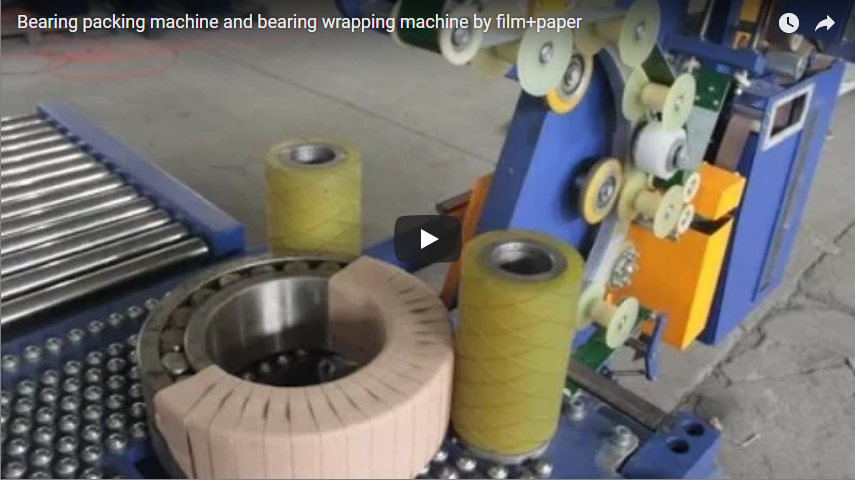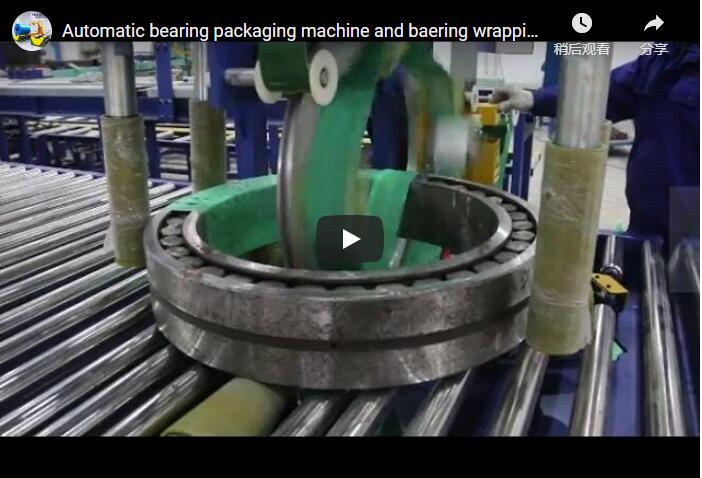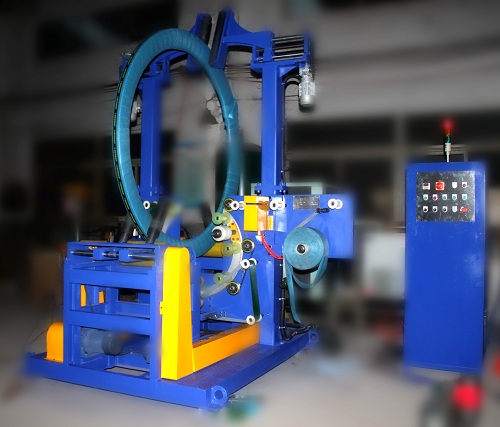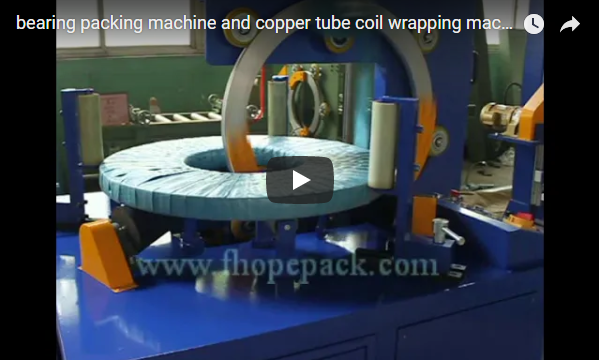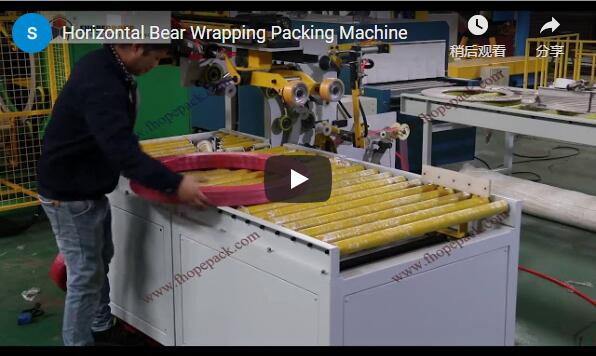Handling and packaging large-diameter, heavy bearings presents unique challenges in industrial environments. Standard packaging methods often fall short, risking damage during transit and storage, leading to costly replacements and downtime. The specialized Large Bearing Packaging Machine featured here provides an automated, robust solution engineered specifically for these demanding applications, ensuring component integrity from the factory floor to the point of installation. This article delves into the technical specifications, design considerations, operational benefits, and key applications of such advanced packaging systems, aligning with the practical focus valued by readers of publications like MM MaschinenMarkt.
1. The Critical Need for Specialized Large Bearing Packaging
Large bearings, often weighing hundreds or even thousands of kilograms and possessing diameters exceeding a meter, are high-value, precision components critical to heavy machinery, wind turbines, and other large-scale industrial equipment. Their size and weight make them susceptible to:
- Handling Damage: Manual or semi-automated handling increases the risk of impacts and surface damage.
- Corrosion: Exposure to moisture and atmospheric contaminants during storage or shipping can lead to rust and degradation, compromising performance.
- Contamination: Dust and debris ingress can impair bearing function.
A dedicated large bearing packaging machine mitigates these risks by providing a controlled, automated wrapping process using protective materials like stretch film, VCI (Volatile Corrosion Inhibitor) paper, or polyethylene films, creating a secure, environmentally sealed package.
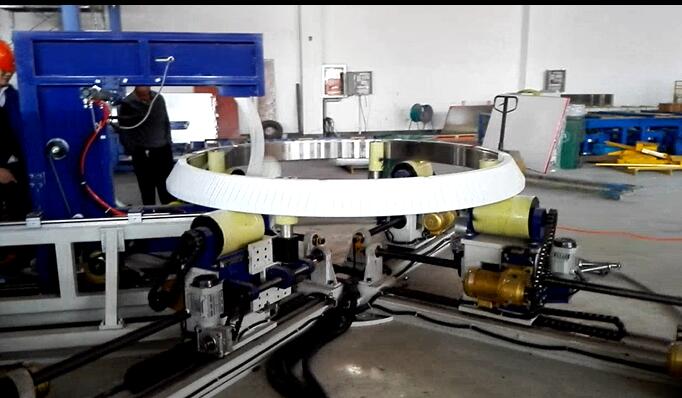
2. Design & Structural Integrity: Built for Heavy Loads
The construction of a large bearing packaging machine reflects the demanding nature of its task:
- Robust Frame: Fabricated from heavy-gauge structural steel, the machine frame is designed to withstand the significant static and dynamic loads imposed by massive bearings. Finite Element Analysis (FEA) is often employed during the design phase to ensure rigidity and long-term durability.
- High Load Capacity: Components like the turntable, rollers, and lifting mechanisms are specified with high safety factors to reliably support bearings weighing up to several tons.
- Durable Materials: Contact surfaces and critical mechanisms utilize wear-resistant materials to handle the abrasive nature of metal components and ensure a long operational lifespan.
3. Core Components and Mechanisms Explained
Several key subsystems work in concert to achieve effective packaging:
- Bearing Support & Rotation System: This typically involves adjustable V-blocks, rollers, or a specialized chucking system to securely hold the bearing. A powerful drive system provides controlled rotation during the wrapping cycle.
- Wrapping Ring & Film Delivery: A vertical or horizontal rotating ring carries the packaging material dispenser (e.g., stretch film carriage). This carriage often includes a powered pre-stretch unit (stretching the film before application), maximizing film yield and ensuring tight, stable wrapping.
- Film Clamping & Cutting: Automated mechanisms clamp the leading edge of the film at the start of the cycle and cleanly cut the film upon completion, ensuring a secure wrap without manual intervention.
- Adjustable Guiding Rollers: Side rollers, often pneumatically or hydraulically actuated, keep the bearing centered and stable during rotation, adapting to different diameters.
4. Automation and Control Systems: Precision and Efficiency
Modern large bearing packaging machines leverage sophisticated control systems for optimal performance:
- PLC Control: A Programmable Logic Controller (PLC) serves as the brain, managing all machine functions, sequences, and safety interlocks.
- HMI Interface: A Human-Machine Interface (HMI), typically a touchscreen panel, allows operators to easily set parameters (e.g., rotation speed, wrapping layers, film overlap, tension), select pre-programmed recipes for different bearing types, monitor the process, and troubleshoot issues.
- Sensors: Photoelectric and proximity sensors detect bearing presence, position, and dimensions, enabling automated cycle adjustments and ensuring safe operation.
- Integration Potential: These machines can often be integrated into larger automated production or logistics lines via communication protocols like Ethernet/IP or Profinet.
5. Technical Specifications Overview
While specific parameters vary by model and customization, typical specifications for a large size bearing packaging machine include:
Note: The parameters listed below provide a general guideline and may not perfectly match the equipment shown in the video. For precise specifications tailored to your application, please contact us directly.
- Machine Type: Automated Orbital Bearing Packaging Machine
- Bearing Outer Diameter (OD): Typically ranging from 500 mm up to 2000 mm (or larger, customisable)
- Bearing Width/Height: Dependent on OD, often up to 500 mm+
- Maximum Bearing Weight: Capacities range from 500 kg to 5000 kg+
- Packaging Materials: Stretch Film (LLDPE), VCI Film, VCI Paper, Polyethylene Film, Compound Paper
- Wrapping Ring Speed: Adjustable, e.g., 20-60 RPM (Revolutions Per Minute)
- Film Pre-Stretch Ratio: Powered pre-stretch, often up to 250-300% (adjustable)
- Control System: PLC (e.g., Siemens, Allen-Bradley) with Touchscreen HMI
- Operating Modes: Automatic and Manual
- Film Tension Control: Electronically adjustable for consistent wrap tightness
- Power Supply: Typically 380V/415V, 50/60Hz, 3-Phase (customisable)
- Compressed Air Requirement: Typically 6-8 bar (if pneumatic systems are used)
- Approx. Machine Dimensions (L x W x H): Highly variable based on capacity, e.g., 5000mm x 2500mm x 3000mm
- Safety Features: Emergency stop buttons, safety fencing with interlocked gates, light curtains (optional), warning beacons.
6. Key Application Areas
The capability to securely package large, heavy bearings makes these machines indispensable in various sectors:
- Wind Energy: Protecting main shaft bearings, blade bearings (pitch bearings), and yaw bearings for wind turbines during transport to remote installation sites and storage is crucial. VCI materials are often essential here to prevent corrosion.
- Heavy Machinery Manufacturing: Packaging large slewing rings, roller bearings, and ball bearings used in construction equipment (excavators, cranes), mining machinery, and tunnelling equipment.
- Automotive & Heavy Transport: While less common for standard automotive parts, specialized vehicles and heavy trucks utilize large bearings in transmissions, axles, and rotating assemblies that benefit from this protective packaging.
- Steel & Metal Processing: Rolling mills and other heavy industrial plants use large bearings that require robust protection against harsh environments during storage and transit.
- Aerospace: Certain large structural components and engine parts incorporating large bearings may require specialized, high-protection packaging.
7. Operational Insights & User Experience Considerations
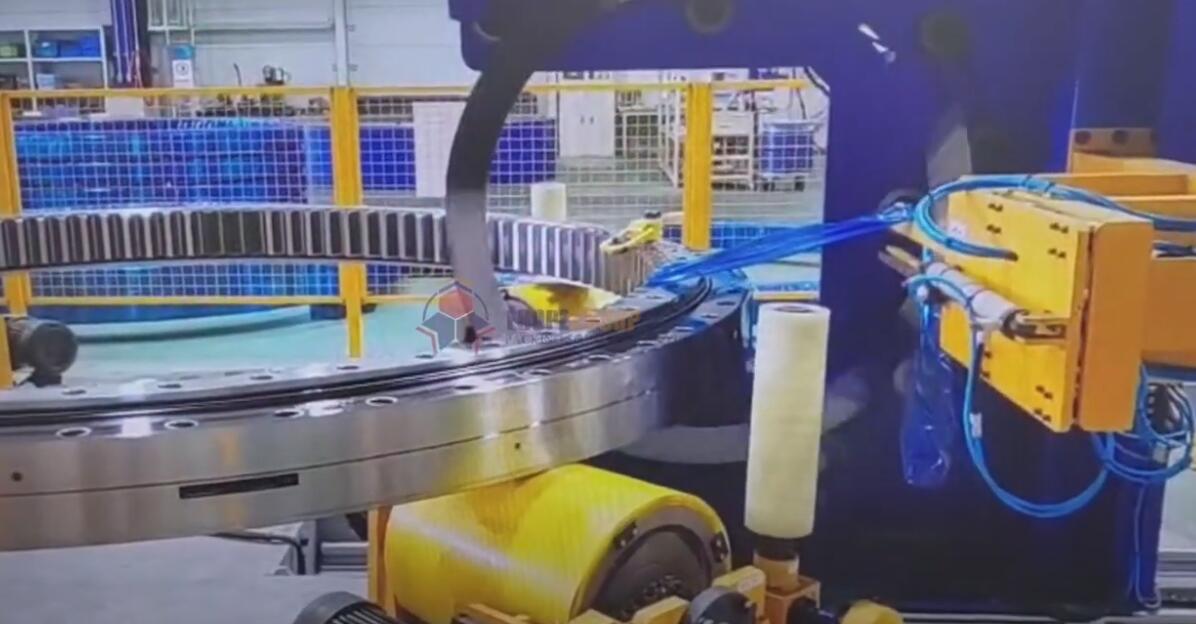
From an operational perspective, these machines offer significant advantages:
- Reduced Labor: Automation drastically cuts down the manual effort required for wrapping large, cumbersome items.
- Consistency: Ensures every bearing is packaged to the same standard, improving protection reliability.
- Efficiency: Faster cycle times compared to manual methods, increasing throughput.
- Safety: Reduces risks associated with manually handling heavy loads and sharp packaging materials.
- Ease of Use: Modern HMIs simplify operation, recipe management, and diagnostics.
- Maintenance: Designed for industrial use, they typically require standard preventative maintenance (lubrication, sensor checks, roller inspection).
Customization options often include tailored support fixtures, integration with conveyors, specific safety upgrades, and modifications for unique bearing geometries or packaging material requirements.
8. Conclusion: Investing in Reliability and Protection
A large size bearing packaging machine represents a strategic investment for industries reliant on large, high-value bearings. By automating the packaging process and utilising appropriate protective materials, these machines safeguard component integrity, reduce the risk of costly damage and corrosion, enhance operational efficiency, and improve workplace safety. Ensuring that critical bearings arrive at their destination in pristine condition is paramount for maintaining production schedules and the long-term reliability of heavy industrial equipment.
For detailed specifications or to discuss your specific large bearing packaging requirements, please contact us:
info@fhopepack.com

